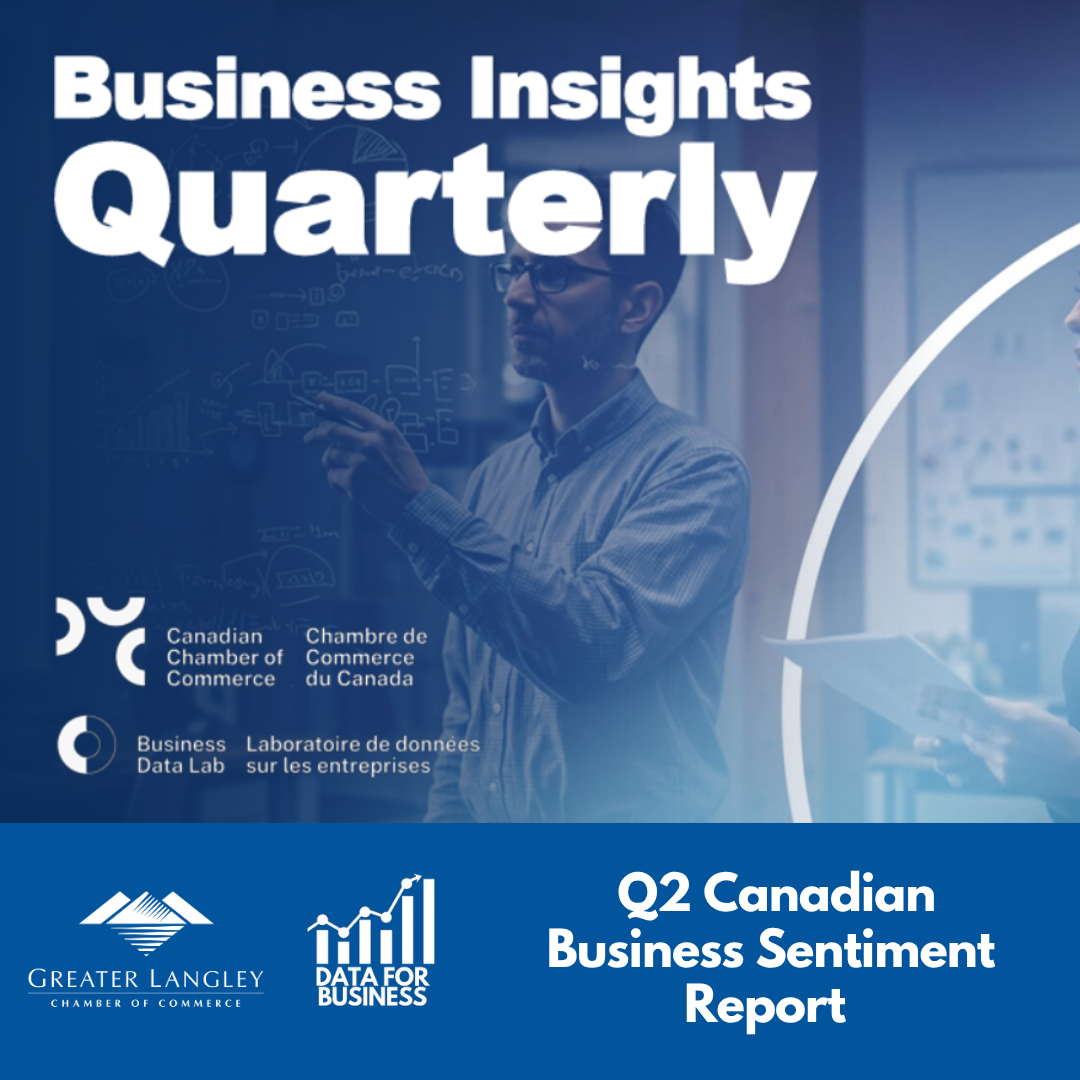Data for Business: Q2 Business Sentiment Report Highlights Continued Caution and Cost Pressures
Data for Business: Q2 Business Sentiment Report Highlights Continued Caution and Cost Pressures

‘Data for Business’ is an effort of the Langley Chamber, in partnership with the Canadian Chamber’s Business Data Lab, to bring our members reports, stats, and analysis on economic and business data to help inform business and investment decisions. Read our latest update below:
The Canadian Chamber of Commerce’s Business Data Lab (BDL) has released the latest Business Insights Quarterly for Q2 2025 and the message is clear: Canadian businesses are feeling the squeeze of rising costs, trade disruptions, and weak consumer demand.
This marks the fourth straight quarter that the BDL’s Business Expectations Index has remained below 100 — a key signal of deteriorating short-term confidence among Canadian firms. And this quarter, the dip is even more pronounced among mid-sized companies, exporters, and firms in Ontario and other trade-exposed regions.
“Businesses continue to face uncertain times, as evidenced by the deteriorating business sentiment across the country, as well as here in Metro Vancouver. Concerns around sales and profitability are dragging down outlook, as are the continued concerns around U.S. tariffs and Canadian counter-tariffs. All in all, this report should give decision-makers in government more evidence that pro-business policies and a pro-growth orientation are needed,” says Cory Redekop, CEO, Greater Langley Chamber of Commerce
Key Findings:
- Trade Tensions Driving Confidence Down
Exporters — traditionally among the most optimistic segments — now rank as the least confident, with their Business Expectations Index falling to its lowest level in years. The pressure comes from multiple directions: tariff threats from the U.S., Canada’s own countermeasures, and continued strain on global supply chains.
For the first time since the CUSMA negotiations in Trump's first term, trade policy uncertainty has as a business concern. While most Canadian firms have taken a "wait and see" approach, exporters have acted decisively, responding by increasing their use of the formal CUSMA tariff preferences, building inventory buffers, and expanding into non-U.S. markets.
- Inflation, Debt, and Demand All Dragging on Growth
Inflation concerns are once again rising after several quarters of easing. One in four businesses now cite inflation and rising input costs as the main obstacle to growth. More firms also report plans to raise prices in the coming months — a signal that cost pressures are increasingly being passed down to consumers.
On top of that, mid-sized firms are feeling a tightening credit environment, with rising debt constraints limiting their ability to invest and grow. And for the third straight quarter, weak consumer demand remains a bigger obstacle than attracting or retaining workers — a notable shift from previous years. Overall, lower outlooks for both sales and especially profitability are dragging down business sentiment in Canada.
- Labour Market Softening
- Regional and Sectoral Impact
While the overall picture is challenging across the country, the report finds that Ontario — particularly in manufacturing hubs like Oshawa, London, and Hamilton — saw the steepest declines in outlook. Calgary also posted a sharp drop in confidence. On the other hand, Atlantic Canada showed more resilience this quarter. BC continues to lag Canada overall in terms of business sentiment, and the Metro Vancouver region even more so.
Retail, manufacturing, and transportation sectors report the highest exposure to cross-border tariff impacts. Notably, more firms are reporting medium-to-high exposure to Canadian counter-tariffs (37%) than to U.S. tariffs (35%), an experience also seen here in Langley as many local businesses rely on American parts, inputs and products.
- Outlook: Pessimism Persists, But So Does Resilience
Despite the difficult landscape, nearly three-quarters of businesses say they are still optimistic about the next 12 months. But with the business sentiment index sitting at 95 — well below the 100 neutral mark — and structural challenges mounting, optimism is increasingly fragile.
- Full Report
To explore the full Q2 2025 Business Insights Quarterly report, click the image below:

